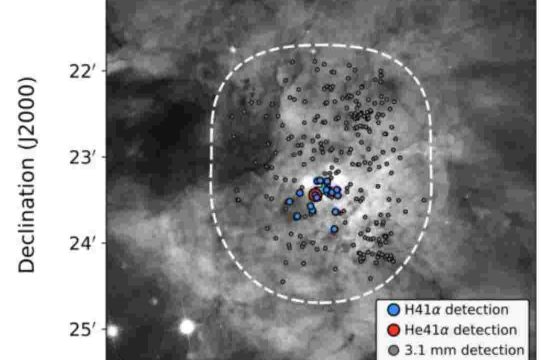X-ray view of the Galactic Centre

Credits: ESA/XMM-Newton/G. Ponti et al. 2015
The central regions of our galaxy, the Milky Way, seen in X-rays by ESA’s XMM-Newton X-ray observatory.
[pullquote]This image portrays powerful remnants of dead stars and their mighty action on the surrounding gas, showing us an unprecedented view of the Milky Way’s energetic core.[/pullquote] It was put together in a new study by compiling all observations of this region that were performed with XMM-Newton, adding up to over one month of monitoring in total.
The image combines data collected at energies from 0.5 to 2 keV (shown in red), 2 to 4.5 keV (shown in green) and 4.5 to 12 keV (shown in blue). It spans about 2.5º across, equivalent to about one thousand light-years.
Cosmic fire
 It is cold, dark, dry and isolated with very little oxygen to breathe in the air, but the unique location makes Concordia station in Antarctica an attractive place for scientists to conduct research. The aurora australis that adds colour to this picture is a well-deserved bonus for the crew of 13 who are spending the winter months cut off from friends and family.
It is cold, dark, dry and isolated with very little oxygen to breathe in the air, but the unique location makes Concordia station in Antarctica an attractive place for scientists to conduct research. The aurora australis that adds colour to this picture is a well-deserved bonus for the crew of 13 who are spending the winter months cut off from friends and family.
[pullquote]For nine months, no aircraft or land vehicles can reach the station, temperatures drop to –80°C and the Sun does not rise above the horizon for 100 days.[/pullquote] Living and working in these conditions is similar in many respects to living on another planet and ESA sponsors a medical doctor to run research for future space missions.
The first astronauts to land on another planet might even see a similar beautiful spectacle illuminating the skies. Auroras appear when radiation from the Sun interacts with the atmosphere and almost all planets in the Solar System have auroras of some sort.
Chasing glacier retreat

Radar images from Sentinel-1A captured the Jakobshavn glacier in western Greenland before and after a massive calving event, which took place between 14 and 16 August 2015.
The image composite includes different Sentinel-1A images from 27 July, and 13 and 19 August. The red, green and blue indicate the position of the calving front and other dynamic features on each respective date.








